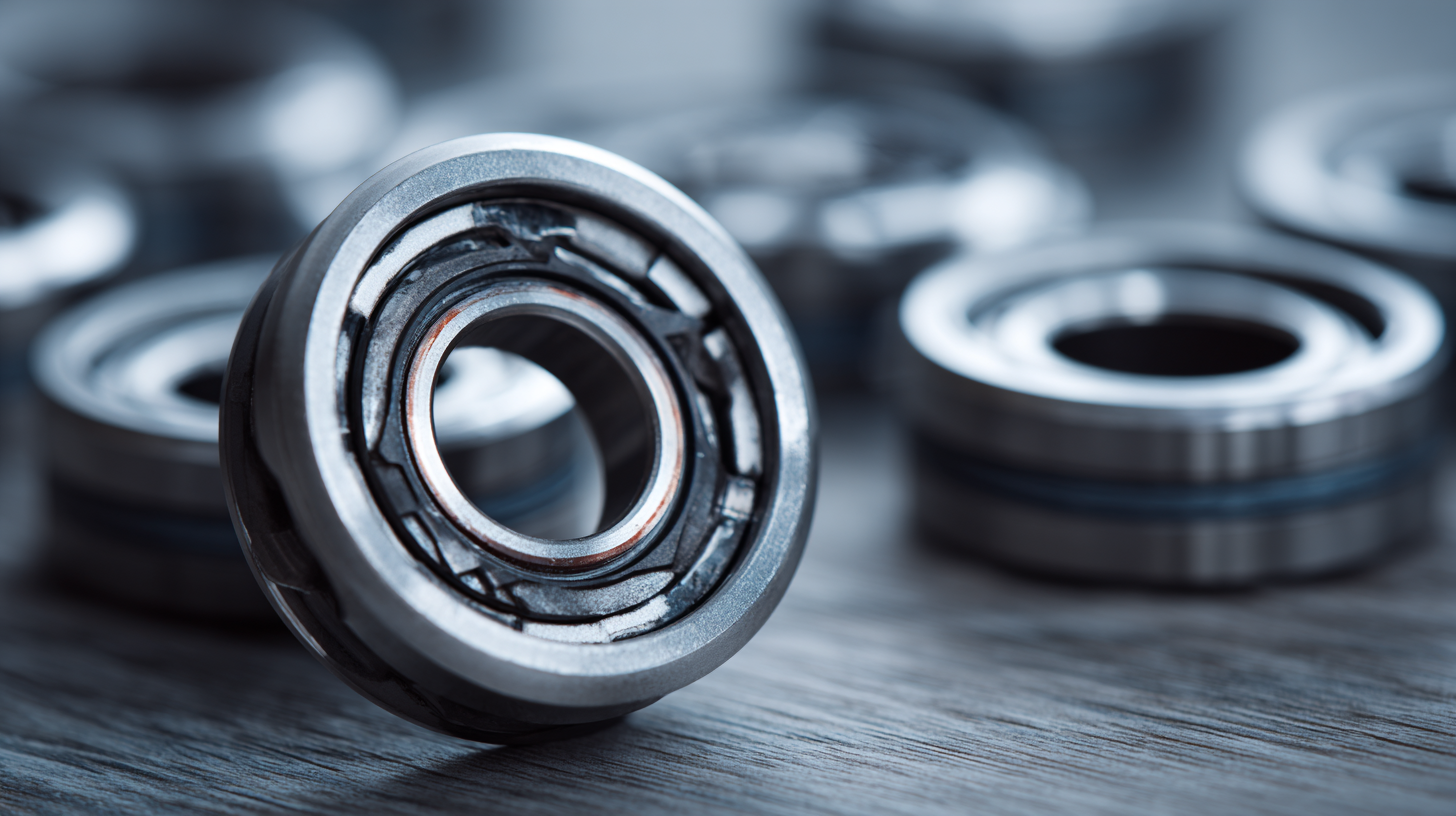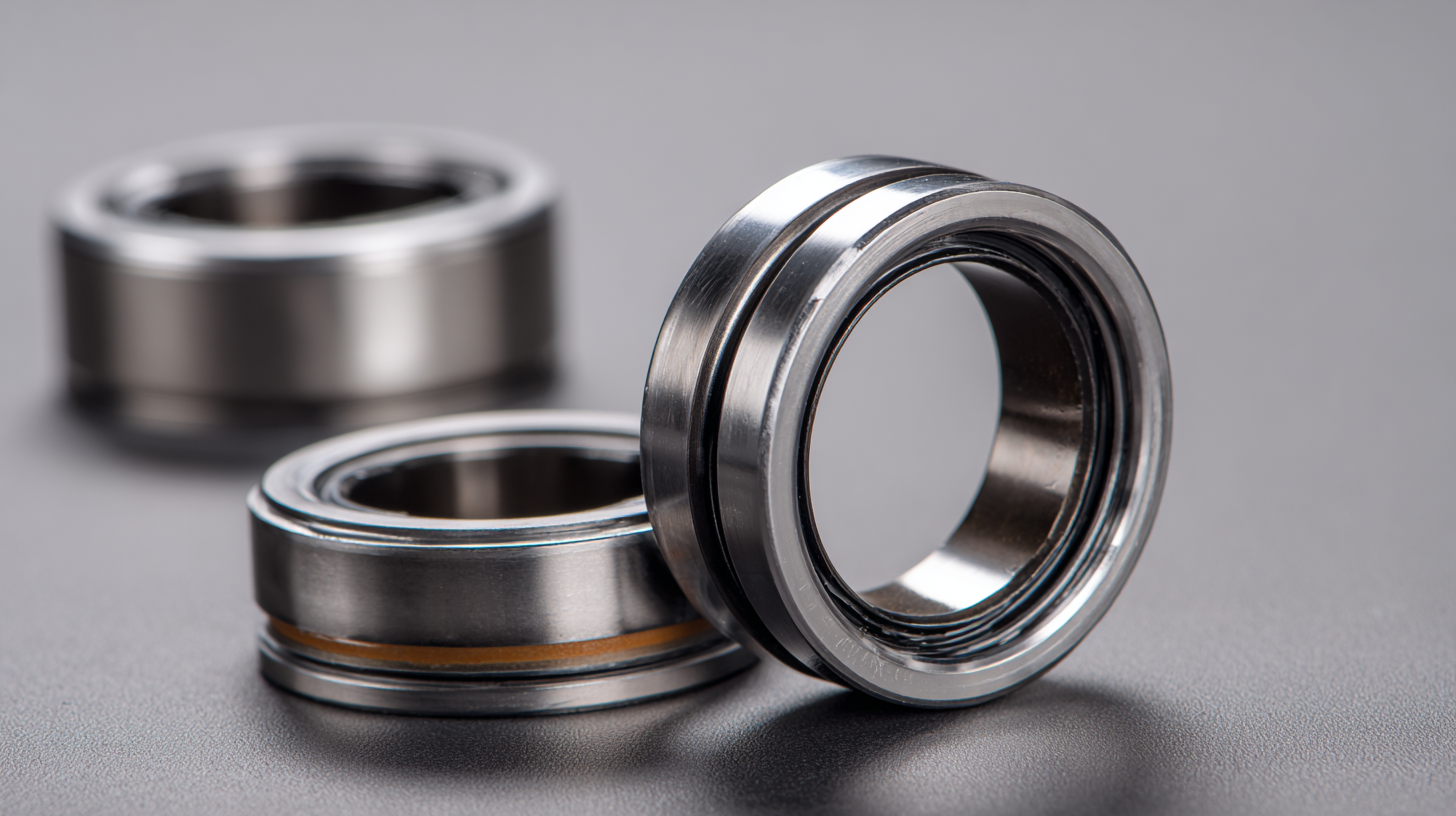Unveiling the Top 5 Examples of Best Angular Contact Bearings for Global Buyers
In the ever-evolving landscape of industrial machinery and automotive applications,
angular contact bearings play a pivotal role in enhancing performance and durability.
According to a recent market analysis by Research and Markets, the global angular contact bearings market is projected to reach
USD 18.4 billion by 2025, growing at a CAGR of 6.2% from 2020 to 2025.
This increase underscores the rising demand for high-speed and precision components across various sectors, including aerospace,
robotics, and heavy machinery. As global buyers seek reliable solutions that can
withstand high radial and axial loads while ensuring optimal operational efficiency, identifying the best examples of angular contact bearings
becomes crucial.
In this article, we unveil the top five angular contact bearing options that stand out in terms of
quality, durability, and performance, paving the way for informed purchasing decisions in an increasingly competitive marketplace.
Key Features That Define High-Performance Angular Contact Bearings in Industrial Applications
Angular contact bearings are essential components in various industrial applications, delivering enhanced performance due to their unique design. These bearings are crafted to support both radial and axial loads, making them critical for high-speed operations. According to a recent industry report by MarketsandMarkets, the global angular contact bearing market is projected to reach $10.45 billion by 2026, exhibiting a CAGR of 6.5%. This growth is largely attributed to the rising demand for precision machinery across sectors such as aerospace, automotive, and energy.
Key features that define high-performance angular contact bearings include their ability to operate at elevated speeds and withstand heavy axial loads. The angle of contact significantly impacts load distribution; typically, a 15° to 40° contact angle is preferred depending on the application. Additionally, the materials used, such as steel and ceramics, greatly influence the bearing's durability and efficiency. For optimal performance, it is crucial to choose bearings that meet specific industry standards and operate within recommended temperatures and speeds.
Tip: When selecting angular contact bearings, consider the lubrication type, as proper lubrication affects the longevity and functionality of the bearing. Regularly monitoring the lubrication condition can prevent premature wear and failure. Always consult manufacturer guidelines for the best maintenance practices.
Analyzing the Load Capacity and Durability of Top Angular Contact Bearings for Global Markets
The global bearings market is witnessing significant growth, with a valuation projected to leap from USD 50.16 billion in 2025 to an impressive USD 97.10 billion in the coming years. This surge emphasizes the increasing demand for high-performance bearings, particularly angular contact bearings, which are critical for various industrial applications. These bearings are specifically designed to handle high axial and radial loads, making them an ideal choice for precision machinery and equipment.
When assessing the top angular contact bearings, key factors to consider include load capacity and durability. Load capacity determines how much weight the bearing can support without failing, while durability ensures it can withstand prolonged usage in demanding environments. The best examples of angular contact bearings in the market not only excel in these areas but also provide a long service life, thereby reducing maintenance costs and downtime for businesses. As the market evolves, global buyers are increasingly focusing on these attributes, making informed choices to enhance the efficiency and reliability of their operations.

Comparative Review: Best Angular Contact Bearings for Precision Engineering Needs
In the realm of precision engineering, angular contact bearings stand out for their ability to handle both axial and radial loads, making them essential components in various high-performance applications. A comparative review of the top angular contact bearings reveals significant variations in load capacity and operational efficiency. According to a recent report from the International Bearing Association, the global market for angular contact bearings is projected to reach $15 billion by 2025, driven by increased demand across industries such as automotive, aerospace, and machinery.
When selecting the right angular contact bearing, it's crucial to consider the bearing's angle of contact, typically ranging from 15 to 40 degrees, as this affects the load distribution and overall performance. One helpful tip for buyers is to assess the dynamic load ratings provided by manufacturers. Ensuring that the bearing's specifications align with your operational requirements will enhance the longevity and reliability of your machinery.
Additionally, lubrication plays a vital role in the performance of angular contact bearings. Regular maintenance and use of the appropriate lubricant can significantly reduce wear and improve efficiency. It’s advisable to consult technical datasheets and consider trial runs to identify the best bearing solution for your specific engineering needs.
Comparative Review: Best Angular Contact Bearings
This chart presents a comparative analysis of top 5 angular contact bearings based on their load capacity, precision, and price. The data helps in identifying the best choices for precision engineering needs.
Emerging Trends in Angular Contact Bearing Technology for International Buyers
The angular contact bearings market is witnessing significant advancements, driven by emerging technology and increasing demand across various sectors. As of 2024, the global bearings market was valued at USD 46.82 billion, with projections indicating growth to USD 50.16 billion in 2025 and reaching an impressive USD 97.10 billion by 2030. This rapid expansion underscores the thriving importance of precision and reliability in rotating machinery, with angular contact bearings taking center stage.
Recent trends in angular contact bearing technology highlight innovations such as enhanced materials, improved lubrication systems, and advanced manufacturing techniques. These advancements aim to reduce friction, increase load capacity, and extend service life, making them particularly appealing to international buyers seeking high-performance solutions for automotive, aerospace, and industrial applications. Moreover, manufacturers are increasingly focusing on customization and predictive maintenance technologies, providing tailored solutions that adapt to specific operational needs, thereby positioning themselves competitively in the global market.

Case Studies: Success Stories of Angular Contact Bearings in Leading Industries
The global market for bearings is witnessing significant growth, with projections indicating a value of $468.2 billion in 2024, and an anticipated rise to $971 billion by 2032. Angular contact bearings play a critical role in this expanding sector, especially in industries such as automotive, aerospace, and manufacturing. These bearings are designed to handle high-speed operations and provide better load-bearing capabilities, making them a preferred choice for many applications.
One notable success story involves the use of angular contact bearings in high-precision aerospace components, where their ability to maintain stability under varying loads is essential. The optimized design and enhanced performance of these bearings have led to increased efficiency and durability in demanding environments.
**Tips for Selecting Angular Contact Bearings:**
When selecting angular contact bearings, consider load ratings and configurations to match your specific application. It’s essential to maintain proper lubrication to extend bearing life and optimize performance. Moreover, always refer to the latest industry reports to stay updated on trends and innovations within the bearings market.
Unveiling the Top 5 Examples of Best Angular Contact Bearings for Global Buyers
| Industry |
Application |
Bearing Size (mm) |
Load Capacity (kg) |
Success Factor |
| Aerospace |
Flight Control Systems |
40x68x15 |
500 |
High Precision |
| Automotive |
Differential Gearbox |
50x90x20 |
800 |
Durability |
| Industrial Machinery |
CNC Machines |
30x55x13 |
300 |
High Load Ratings |
| Robotics |
Robot Arms |
25x62x17 |
400 |
Speed and Accuracy |
| Wind Energy |
Turbine Gearboxes |
60x120x28 |
1500 |
Reliability |